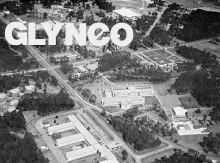
Back علوم جنائية رقمية Arabic Rəqəmsal kriminalistika Azerbaijani Digitalna forenzika BS Ciència forense digital Catalan Ψηφιακή εγκληματολογία Greek Análisis forense digital Spanish جرمیابی قانونی دیجیتال Persian डिजिटल फोरेंसिक Hindi Digitalna forenzika Croatian Forensik digital ID

| Part of a series on |
| Forensic science |
|---|
 |
Digital forensics (sometimes known as digital forensic science) is a branch of forensic science encompassing the recovery, investigation, examination, and analysis of material found in digital devices, often in relation to mobile devices and computer crime.[1][2] The term "digital forensics" was originally used as a synonym for computer forensics but has expanded to cover investigation of all devices capable of storing digital data.[1] With roots in the personal computing revolution of the late 1970s and early 1980s, the discipline evolved in a haphazard manner during the 1990s, and it was not until the early 21st century that national policies emerged.
Digital forensics investigations have a variety of applications. The most common is to support or refute a hypothesis before criminal or civil courts. Criminal cases involve the alleged breaking of laws that are defined by legislation and enforced by the police and prosecuted by the state, such as murder, theft, and assault against the person. Civil cases, on the other hand, deal with protecting the rights and property of individuals (often associated with family disputes), but may also be concerned with contractual disputes between commercial entities where a form of digital forensics referred to as electronic discovery (ediscovery) may be involved.
Forensics may also feature in the private sector, such as during internal corporate investigations or intrusion investigations (a special probe into the nature and extent of an unauthorized network intrusion).
The technical aspect of an investigation is divided into several sub-branches related to the type of digital devices involved: computer forensics, network forensics, forensic data analysis, and mobile device forensics.[3] The typical forensic process encompasses the seizure, forensic imaging (acquisition), and analysis of digital media, followed with the production of a report of the collected evidence.
As well as identifying direct evidence of a crime, digital forensics can be used to attribute evidence to specific suspects, confirm alibis or statements, determine intent, identify sources (for example, in copyright cases), or authenticate documents.[4] Investigations are much broader in scope than other areas of forensic analysis (where the usual aim is to provide answers to a series of simpler questions), often involving complex time-lines or hypotheses.[5]
- ^ a b Cite error: The named reference
ijde-2002was invoked but never defined (see the help page). - ^ Cite error: The named reference
carrierwas invoked but never defined (see the help page). - ^ "The Different Branches of Digital Forensics". BlueVoyant. 2022-03-08.
- ^ Cite error: The named reference
handbookwas invoked but never defined (see the help page). - ^ Cite error: The named reference
df-basicswas invoked but never defined (see the help page).
© MMXXIII Rich X Search. We shall prevail. All rights reserved. Rich X Search